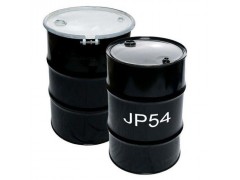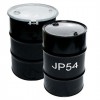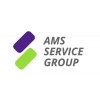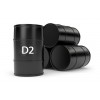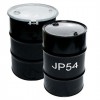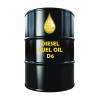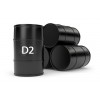Brand:89260041243
Description:TS-1 is the main jet fuel grade available in Russian and CIS states. It is a kerosine type fuel with slightly higher volatility (flash point is 28C minimum) and lower freeze point (<-50C) compared to Jet A-1. TS-1 and RT are two aviation turbine fuels defined by the Russian specification GOST 10227-86 (latest revision). According to a British Airways report, TS-1 is the most widely used jet fuel in the C.I.S. [6] TS-1 is produced by straight atmospheric distillation from a high sulfur crude, half of which is hydrotreated and the other half a straight-run product which may have had mild caustic treatment. RT is a higher quality fuel that can be produced from straight run or hydrotreated kerosene; additives may be included to improve its properties. RT has improved lubricity properties and a wider boiling range. The major distinction between these fuel specifications and Jet A/Jet A-1/JP-8 specifications is the lower minimum flash point of 28°C as compared to 38°C. Jet Fuel TS-1, offered by us is high on purity and thus, best serves the aviation industry maximizing the desired performance. Our Jet Fuel TS-1 conforms to the highest industrial standards. We provide Jet Fuel TS-1 in two grades: Jet Fuel TS-1 (Aviation Kerosene Jet Fuel TS-1) and Jet Fuel AI 91/91. We can efficiently manage bulk orders of Jet Fuel TS-1 is the main jet fuel grade available in Russian and CIS states. It is a kerosine type fuel with slightly higher volatility (flash point is 28C minimum) and lower freeze point (<-50C) compared to Jet A-1. Jet Fuel TS-1 (Aviation Kerosene Jet Fuel TS-1). We make sure to deliver the product Jet Fuel TS-1 to the desired location at the specified time.
Origin:Other country Russia
MOQ:50,000Metric Ton/Metric Tons
FOB:perBarrel/Barrels30--34USD
Port:Rotterdam
Payment Terms:T/T
Supply Ablility:5000000Metric Ton/Metric Tons
Supply Time:Day
Delivery Time:2017-05-19
Packaging Details:TTT/TTO
Product detail: AVIATION KEROSENE COLONIAL GRADE (JP-A1)
Aviation Gasoline
Aviation gasoline is a complex mixture of relatively volatile hydrocarbons. The higher performance grades are produced by blending specially manufactured high octane petroleum fractions consisting of paraffins and light aromatic compounds. Aviation gasoline grades are identified in specifications by their minimum anti-knock engine ratings. The use of incorrect grade can have disastrous results in terms of engine performance and aircraft safety. In order to differentiate between grades, dyes are added to the fuels in accordance with an internationally agreed colour code to impart a distinctive colour.
Applications:
In general, each type of engine is certified to operate on a specific grade of fuel and at one time several grades covering a range of anti-knock ratings were produced to meet the requirements of all the different types of engine. In recent years the diminishing demand for aviation gasoline has led to reduction in the number of grades available. With fewer fuel grades, manufacturing, storage and handling costs are reduced with subsequent benefits to consumers. Avgas 100LL is now the most widely available grade having replaced Avgas 80 and Avgas 100 in most areas of the world.
Aviation turbine fuels (jet fuels)
Aviation turbine fuels (jet fuels) are manufactured predominantly from straight run kerosines which normally require further treatment to meet the specification requirements. At some refineries there is an increasing tendency to incorporate proportions of product produced by hydrocracking processes.
The Check List for Jet A-1, a kerosine fuel having a maximum freezing point of -47oC, forms the basis of international supply of virtually all commercial aviation world-wide. Most military organisations now use kerosine type fuels which are virtually indentical to Jet A-1 in basic properties, differing mainly in the types of additives required. In areas where the same basic grade is used by both military and commercial industries, only one grade need be manufactured, stored and distributed as the additives required by the military can be injected as the fuel is supplied to the military.
Jet A-1
Motoline Jet A-1 is a petroleum distillate blended from kerosine fractions having a freezing point below –40 decgrees C and a flash point above 38 degrees C. It does not usually contain a static dissipator additive.
JET A-1Jet A-1 is a kerosene grade of fuel suitable for most turbine engined aircraft. It is produced to a stringent internationally agreed standard, has a flash point above 38°C (100°F) and a freeze point maximum of -47°C. It is widely available outside the U.S.A. Jet A-1 meets the requirements of British specification DEF STAN 91-91 (Jet A-1), (formerly DERD 2494 (AVTUR)), ASTM specification D1655 (Jet A-1) and IATA Guidance Material (Kerosine Type), NATO Code F-35.
Jet A-1
Jet A-1 is a kerosine grade of fuel suitable for most turbine engined aircraft. It has a flash point minimum of 38 degrees C (100°F) and a freeze point maximum of -47 degrees C. It is widely available outside the U.S.A. The main specifications for Jet A-1 grade (see below) are the UK specification DEF STAN 91-91 (Jet A-1) Nato code F-35, (formerly DERD 2494) and the ASTM specification D1655 (Jet A-1)
Jet A
Jet A is a kerosine grade fuel, normally only available in the U.S.A. It has the same flash point as Jet A-1 but a higher freeze point maximum (-40°C). It is supplied against the ASTM D1655 (Jet A) specification.
Jet B
Jet B is a distillate covering the naphtha and kerosine fractions. It can be used as an alternative to Jet A-1 but because it is more difficult to handle (higher flammability), there is only significant demand in very cold climates where its better cold weather performance is
TS-1
TS-1 is the main jet fuel grade available in Russian and CIS states. It is a kerosine type fuel with slightly higher volatility (flash point is 28C minimum) and lower freeze point (<-50C) compared to Jet A-1.












